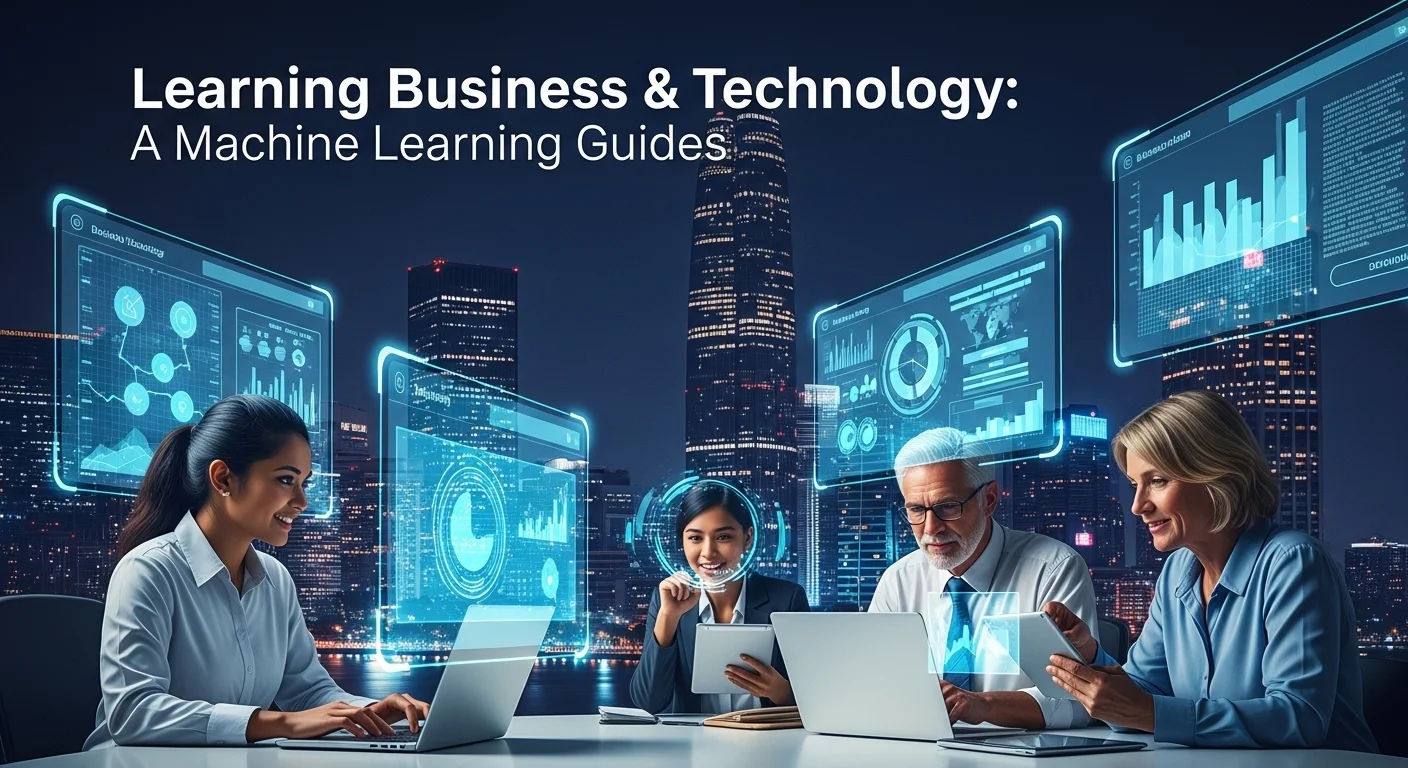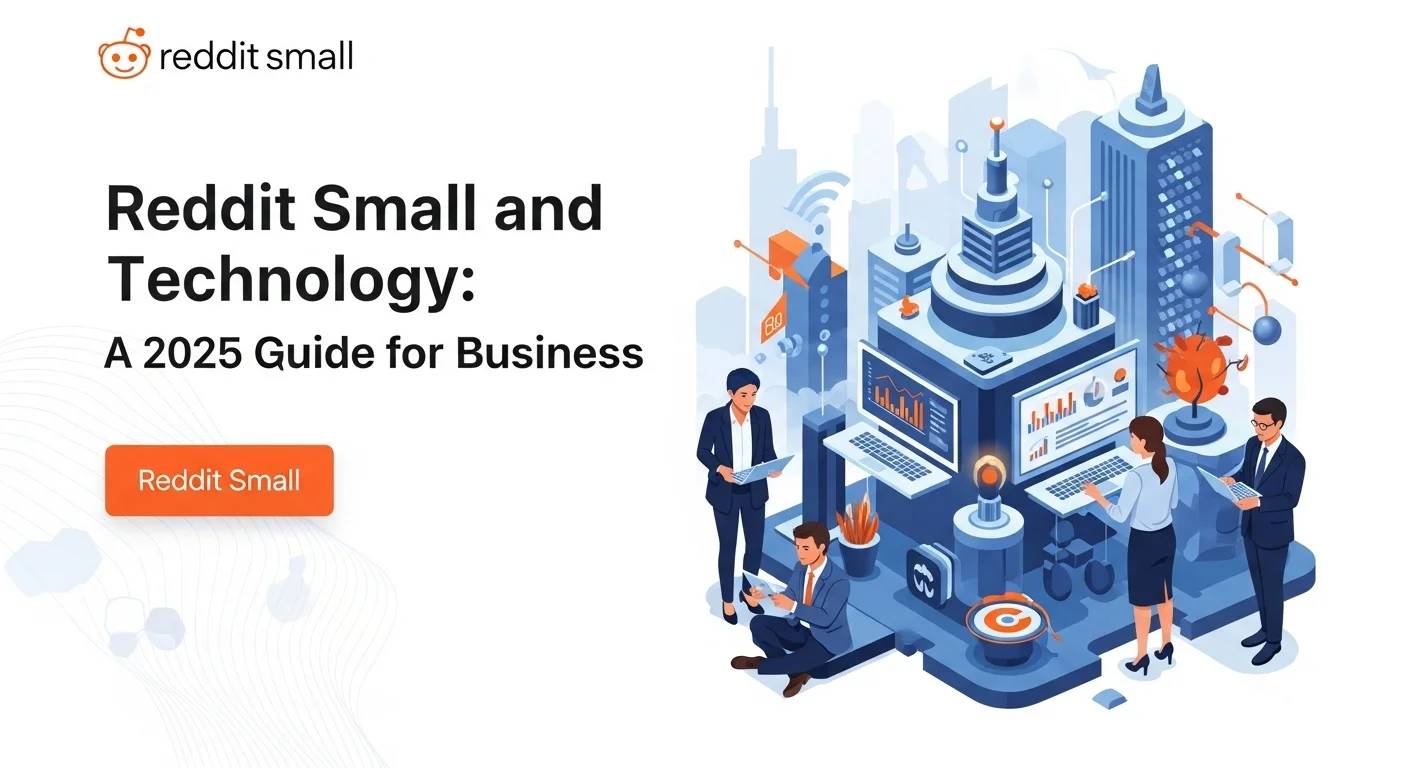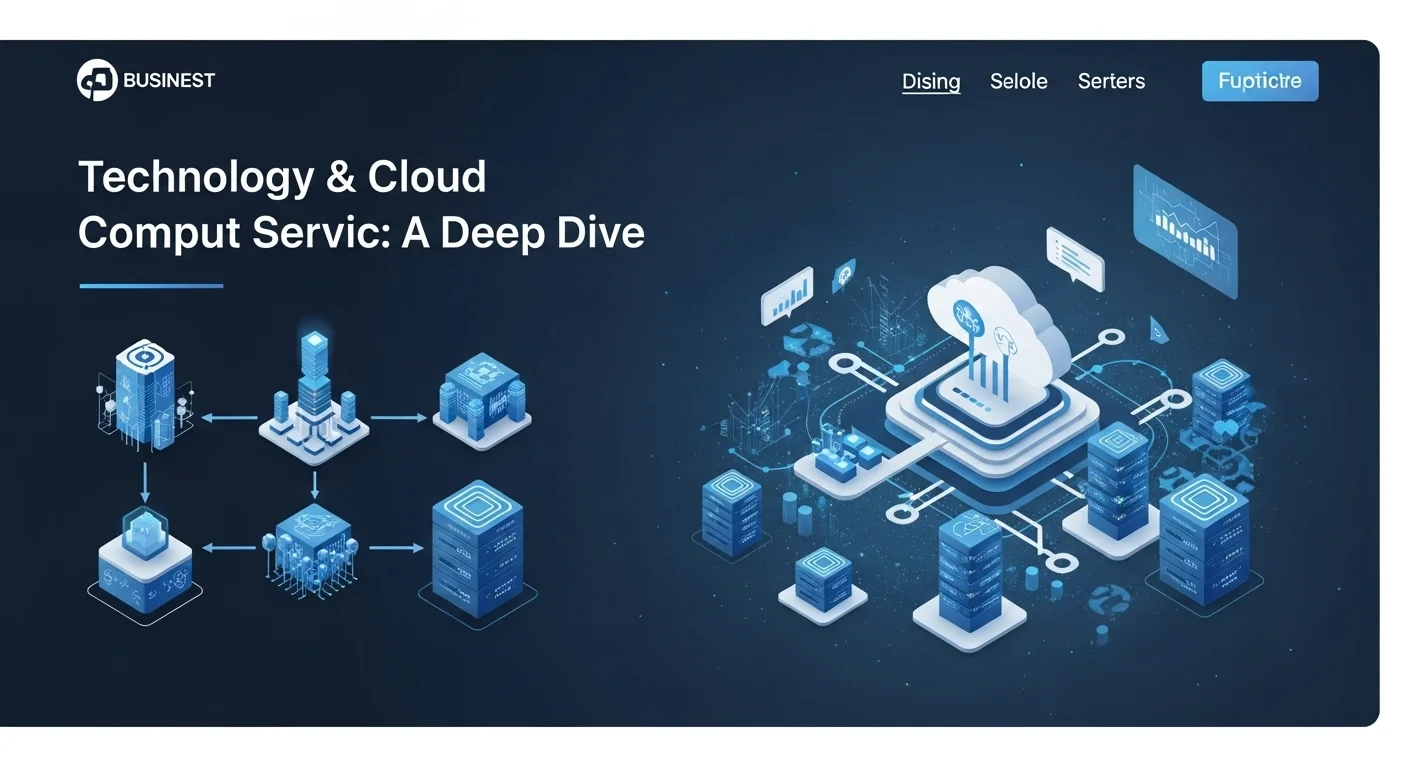Building a Learning Business: A Practical Guide to Using AI for Growth

Executive Summary
In my years working at the intersection of tech and business strategy, I've seen one concept change the game for companies more than any other: becoming a 'Learning Business.' This isn't just a fancy buzzword; it's a fundamental shift to an organization that uses technology, especially machine learning, to constantly adapt, innovate, and stay ahead. This article is my personal guide for leaders and tech enthusiasts on how to make this transformation happen. We'll walk through the essential connection between your business goals and the tech you use, focusing on how to turn raw data into real, tangible growth. We'll explore practical machine learning applications I've seen succeed, simple strategic frameworks for leaders, and what to look for in the world of machine learning consulting. By the end, you'll see that this is about more than just adopting new software; it’s about reshaping your entire business to be smarter, faster, and ready for a future defined by AI.
Table of Contents
Table of Contents
- What is a Learning Business and Why Does it Matter?
- The Engine of the Learning Business: Machine Learning
- Why This is Crucial for Business Leaders
- Real-World Examples Across Industries
- The Rise of Machine Learning Consulting
- Bringing it All Together: Integrating ML into Your Business
What is a Learning Business and why is it important in Technology?
In today's business world, I've noticed a clear line drawn between companies that are thriving and those that are just surviving. That line is often defined by whether they've become a 'Learning Business.' At its heart, a Learning Business is one that has woven continuous learning and data-driven decisions into its very fabric. It’s not just a philosophy; it’s a strategic necessity, and the engine that powers it is technology—specifically, artificial intelligence (AI) and machine learning (ML). Frankly, becoming a Learning Business is the difference between leading the market and being left behind. Companies that get this right are amazing at predicting market shifts, understanding what their customers truly want, and making their operations incredibly efficient. Technology isn't just a tool here; it's the central nervous system that allows the entire organization to think and react intelligently.
The whole concept relies on a powerful feedback loop: your business operates and creates data, you use technology to find insights in that data, those insights guide your strategy, and your new actions create even more data. This cycle allows the business to get smarter over time. Before, this was a slow, manual process. But with tools like cloud computing, big data analytics, and especially machine learning, this cycle can run at incredible speed and scale. This is where I've seen companies unlock true agility. By automating complex analysis, they free up their people to focus on strategy and big-picture innovation. The result is an organization that's not just efficient but also tough and nimble enough to handle whatever the market throws at it.
The Engine of the Learning Business: Machine Learning
If technology is the nervous system, then machine learning is the brain. ML is a type of AI that lets computers learn from data to make predictions or decisions without being explicitly told how. This is what turns a company that's drowning in data into one that's driven by powerful insights. The applications are everywhere, touching every part of a business. In my experience, it's no longer optional for leaders to understand ML's potential; it's a core skill for guiding a company into the future. The focus isn't on the complex math, but on spotting the golden opportunities where machine learning can create real business value.
One of the biggest impacts I've seen is in customer personalization, a key machine learning business application. The amount of customer data we have now is staggering, and ML gives us the tools to make sense of it all. By analyzing everything from browsing history to purchase patterns, ML models can predict what a customer might love next. This allows for incredibly personal marketing and product recommendations that I've seen dramatically increase sales and loyalty. It shifts the business from reacting to problems to proactively anticipating what customers want.
Why This is Crucial for Business Leaders
For any executive, embracing machine learning for business leaders is about much more than signing off on tech purchases. It's about leading a cultural change towards curiosity and data-driven thinking. You have to build an environment where data is treated like gold and your teams feel safe to experiment and learn from the outcomes. This starts with a clear vision for how technology will solve a real business problem, whether it's stopping customers from leaving, optimizing your supply chain, or catching fraud. A successful project always starts with a clear business goal, not with the tech. The leaders who can connect business strategy to technical possibilities are the ones who get the biggest return on their AI investments. It’s about asking the right questions, defining what success looks like, and understanding that ML is a journey of continuous improvement, not a magic wand.
Real-World Examples Across Industries
The applications of machine learning in business are changing every industry. In finance, I've worked on projects where ML algorithms spot fraud by analyzing millions of transactions in real time, catching patterns a human could never see. It saves billions and protects everyone. In healthcare, it's transforming diagnostics. I've seen models trained on medical images detect diseases like cancer with stunning accuracy, often earlier than a human expert, which leads to better outcomes for patients. Manufacturing has been revolutionized by predictive maintenance. Sensors on machines feed data to ML models that predict when a part might fail, so repairs can be scheduled before a costly breakdown occurs. And in retail, beyond just recommending products, ML makes supply chains smarter by forecasting demand with incredible precision, ensuring shelves are stocked with what customers want, when they want it.
The Rise of the Machine Learning Consulting Business
Let's be honest: implementing machine learning well is complex and requires specialized skills. This has created a vital new field: the machine learning consulting business. Many companies, especially smaller ones, just don't have the in-house team to build and launch effective ML models. Consultants bridge this gap, offering access to data scientists, engineers, and strategists who can guide a company on its AI journey. They play a critical role, from figuring out your business needs and data readiness all the way to building, deploying, and fine-tuning the solutions. For many businesses I've worked with, partnering with a consultant is the smartest and fastest way to start using AI, giving them a clear plan and reducing the risks that come with new technology. A great consultant doesn't just hand over a piece of software; they help you build your own team's skills for long-term success.
Bringing it All Together: Integrating ML into Your Business
Ultimately, the dream is to seamlessly blend machine learning with business applications to create one smart, cohesive system. This isn't just about running a model in a lab; it's about feeding its insights directly into the tools your employees use every single day. For example, a sales CRM can be supercharged with an ML model that scores leads, helping the sales team focus on the most promising prospects. An e-commerce site can have a recommendation engine built right in, creating a dynamic, personal shopping experience for every visitor. This deep integration is where the real magic happens. It turns abstract data into real-time, actionable advice. As this happens, the entire organization gets smarter. Decisions become better informed, processes become leaner, and the company's ability to innovate skyrockets. This fusion of ML and business is the true mark of a Learning Business, ready to thrive in the age of AI.

Your Complete Guide to a Tech-Powered Learning Business
So, you're ready to start the journey of transforming your organization into a Learning Business. It's an exciting path that requires a solid grasp of both the technology and the business strategy. This guide is my attempt to lay out a practical roadmap, moving you from idea to action. It's built for leaders who want to integrate machine learning into the heart of their company to create real, lasting value. The road isn't always straight, but I've found that with a clear framework, any organization can build a truly intelligent enterprise if they're willing to invest in their data, their people, and a new way of thinking. It all comes down to the relationship between your tech and your strategy, where each makes the other better in a constant cycle of improvement.
The very first step, and I can't stress this enough, is to build a foundation on high-quality data. Data is the fuel for machine learning; without good fuel, the fanciest engine is useless. This means setting up clear rules for data governance—making sure data is collected correctly, stored safely, and available to the teams who need it. I've seen more promising AI projects fail because of bad data than because of bad algorithms. So, your first big effort has to be on 'data hygiene'—cleaning, organizing, and enriching your data. It's not the most glamorous work, but it's the most important stage of the whole process. It requires your IT, data, and business teams to work together to find the most valuable data and protect its integrity.
Technical Methods in a Business Context
You don't need to be a coding genius, but as a leader, you do need to understand the main flavors of machine learning to make smart strategic decisions. They generally fall into three buckets: Supervised, Unsupervised, and Reinforcement Learning.
Supervised Learning: This is the workhorse of machine learning in business today. It's like teaching a student with a study guide. You train a model on a dataset where the 'right answers' are already known (it's 'labeled'). For instance, to predict which customers might leave, you'd feed it historical data on all your customers, with each one labeled as 'left' or 'stayed.' The algorithm learns the patterns associated with each outcome. Other common machine learning business applications here include filtering spam emails, identifying products in photos, or figuring out if a customer review is positive or negative. The key is having a lot of good, labeled historical data to learn from.
Unsupervised Learning: This is more like detective work. It works with data that has no labels or predefined outcomes. The goal isn't to predict an answer but to find hidden patterns or structures in the data itself. A common technique is 'clustering,' which I've used with retail clients to segment their customers into groups with similar buying habits. This allows for much smarter, targeted marketing. Another great use is anomaly detection, which can flag weird data points that might signal fraud, a security breach, or a defect on a production line. It's incredibly powerful for discovering things you didn't even know you should be looking for.
Reinforcement Learning: This is a more advanced approach where an algorithm, or 'agent,' learns by doing. It tries different actions in an environment to reach a goal, learning from trial and error by getting 'rewards' for good moves and 'penalties' for bad ones. Its business uses are still emerging but are incredibly powerful. Think of dynamic pricing for an airline or ride-sharing app, where the algorithm learns to set the perfect price based on real-time supply and demand. I've also seen it used to optimize complex supply chains and even train warehouse robots.
Business Techniques for a Smooth Adoption
Having the best tech won't help if your business isn't ready for it. The most important technique I can share is to start small with a pilot project. Instead of trying to overhaul the entire company with AI at once, pick one specific business problem where you see a clear chance for a good return on investment. This pilot acts as a proof-of-concept. It lets your team learn, test their ideas, and show real value in a controlled setting. A successful pilot builds incredible momentum and gets everyone excited for bigger projects.
Another huge piece of the puzzle is talent. Good data scientists are hard to find. Companies need a smart strategy here, which usually involves a mix of hiring experts, training your current employees, and partnering with a machine learning consulting business. A consultant can bring in the initial firepower to get your projects running and help train your in-house team, building a sustainable capability for the future. In my experience, this hybrid approach works best for most organizations.
Furthermore, every leader needs to understand the project lifecycle. A framework I rely on is CRISP-DM (Cross-Industry Standard Process for Data Mining). It breaks a project into six clear phases: Business Understanding, Data Understanding, Data Preparation, Modeling, Evaluation, and Deployment. This structure keeps the project tied to business goals from start to finish. It forces the team to confirm the business case before a single line of code is written and to measure the model's performance against real success metrics.
Advanced and Emerging Applications
As the field grows, the applications of machine learning in business are getting more and more amazing. Generative AI, for example, is taking the world by storm. It's being used to write marketing emails, generate software code, and power chatbots that can handle incredibly complex customer questions. In the industrial world, combining the Internet of Things (IoT) with ML is creating 'digital twins'—virtual copies of physical machines or systems. You can use them to simulate and optimize performance in real time, which is a game-changer for manufacturing and logistics. Another key area is Explainable AI (XAI). As models get more complex ('black boxes'), we need to understand *how* they make decisions, especially in sensitive areas like finance and healthcare. XAI brings that transparency, building trust and ensuring models are fair and unbiased. This is a must-have for any responsible AI strategy.
Working with a Machine Learning Consulting Business
For many, hiring a machine learning consulting business is the most logical first step. When choosing a partner, look beyond their technical chops. A great consultant needs to have sharp business sense and be able to translate your challenges into a workable tech solution. Ask for case studies from your industry. Talk to them about how they manage projects and communicate. Transparency and collaboration are everything. Think of it as a partnership, not just a service. The goal isn't just to get a model deployed, but to transfer knowledge to your team. A good firm will help you build a long-term AI strategy, give advice on data governance, and help you think through the ethics of your project. Setting a clear budget and scope upfront will save a lot of headaches later on.
The Perfect Blend of Technology and Strategy
The ultimate goal is to achieve a seamless integration of machine learning with business applications to create one smart, cohesive system. This isn't just about running a model in a lab; it's about feeding its insights directly into the tools your employees use every single day. For example, a sales CRM can be supercharged with an ML model that scores leads, helping the sales team focus on the most promising prospects. An e-commerce site can have a recommendation engine built right in, creating a dynamic, personal shopping experience for every visitor. This deep integration is what spreads the value of machine learning across the whole company, empowering every employee to make smarter decisions. This blend is what defines a mature Learning Business—one that's built to win in our complex, data-filled world.

Tips and Strategies to Sharpen Your Tech Experience as a Learning Business
Becoming a Learning Business isn't a one-and-done project; it's a commitment to continuous improvement. Once you have the foundation in place, the game shifts to optimizing, scaling, and nurturing a culture that lives and breathes data-driven innovation. This final section is my collection of advanced tips and strategies for companies that want to deepen their tech skills and squeeze every drop of value from their AI investments. We'll cover best practices for managing your models, the absolute necessity of ethical AI, and a look at the future trends that are shaping business technology.
A critical practice I instill in every team I work with is to embrace an iterative cycle. Machine learning models aren't like bridges you build once; they're more like gardens that need constant tending. Over time, a model's performance can degrade in a process called 'model drift,' which happens when the real-world data it sees starts to look different from the data it was trained on. To fight this, you need to adopt MLOps (Machine Learning Operations). It's a discipline that combines machine learning with the automation and monitoring principles of DevOps to manage the entire ML lifecycle. MLOps helps you automate training, testing, and deployment, and it includes setting up alerts that tell you when a model needs to be retrained to stay sharp and reliable.
My Best Practices for Sustainable Success
1. Start with a Pain Point: From my experience, the AI projects that succeed are the ones that are relentlessly focused on solving a specific, high-value business problem. Before anyone touches any tech, leaders need to clearly define the goal. Are you trying to cut operational costs by 10%? Boost customer retention by 5%? Having a measurable goal gives the project a clear direction and a simple way to define success.
2. Obsess Over Data Quality: I know I sound like a broken record, but your data is everything. Setting up strong data governance and quality management is not optional. This means having clear processes for how you collect, clean, and validate data. It also means protecting privacy and complying with rules like GDPR. Investing in your data infrastructure upfront will save you from massive headaches and rework later.
3. Make AI Ethics a Priority: As AI gets more powerful, the ethical risks grow. A model trained on biased data can easily amplify unfair societal biases, leading to discriminatory outcomes in hiring, lending, or even justice. You must be proactive here. Implement a framework for ethical AI. This means auditing your data and models for bias, using Explainable AI to ensure transparency, and having clear accountability for your AI's decisions. A commitment to ethics isn't just about compliance; it's fundamental to earning the trust of your customers and the public.
4. Build a Culture of 'Smart' Failure: A true Learning Business thrives on a culture that encourages experimentation and isn't afraid to fail. Not every idea will work. Leaders have to create a safe space for their teams to test hypotheses, iterate on models, and learn from what didn't work. I always tell my teams that we celebrate the learning from a failed experiment just as much as a success. This mindset is the rocket fuel for innovation.
Essential Tools and Platforms for Your Business
The rise of AI has been fueled by powerful, user-friendly tools, especially from the major cloud providers. Platforms like AWS SageMaker, Google Cloud AI Platform, and Microsoft Azure Machine Learning offer everything you need to build, train, and deploy ML models at scale. They've been a game-changer because they handle all the complex underlying infrastructure, letting your data scientists focus on creating value instead of managing servers. For most businesses, starting here is a no-brainer.
Beyond the big three, there's a whole ecosystem of amazing tools. Platforms like Dataiku or H2O.ai are great because they support both expert coders and business analysts who prefer a more visual, drag-and-drop approach. If you're looking to start a machine learning consulting business, becoming an expert in these platforms is a must. They streamline the tedious parts of the workflow, allowing you to build and test ideas much faster. Choosing the right set of tools for your company's skills and goals is a key strategic decision.
Advanced Strategies for Leaders and Practitioners
For machine learning for business leaders, one of the most critical jobs is to measure and communicate the ROI of your AI projects. This means you have to look past technical stats like 'model accuracy' and focus on business results. How much money did our new fraud model save us? By what percentage did the recommendation engine increase the average shopping cart size? Tying ML performance directly to business KPIs is how you justify more investment and prove the strategic value of what you're doing. As a leader, you also have to manage expectations and communicate clearly that AI is a long-term strategic journey, not a quick fix.
If you're launching or growing a machine learning consulting business, specialization is your friend. The field is huge, so focusing on a specific industry (like healthcare or finance) or a type of problem (like natural language processing) will make you stand out. Build a strong portfolio of successful projects and get testimonials from happy clients—this is your best marketing. I've also found that networking, contributing to open-source projects, and sharing what you know through articles or talks is a great way to build a reputation. The best consultants aren't just tech gurus; they're trusted advisors who truly understand their clients' businesses.
The Future of Machine Learning in Business
The bond between machine learning and business applications is only going to get tighter. I'm seeing a future that's more automated, more real-time, and more deeply intelligent. A huge trend is 'TinyML,' which is all about running ML models on tiny, low-power chips inside everyday devices. This will bring intelligence to everything from factory sensors to home appliances. And of course, Generative AI will continue to revolutionize creative and knowledge work. The applications of machine learning in business will expand to places we can barely imagine today. For any Learning Business, keeping an eye on these trends and being ready to adapt is the key to staying on top. The journey of learning truly never ends.
Expert Reviews & Testimonials
Sarah Johnson, Business Owner ⭐⭐⭐
As a small business owner, I found this really insightful. I wish there were a few more step-by-step examples for someone like me who's just starting out, but the core ideas are great.
Mike Chen, IT Consultant ⭐⭐⭐⭐
A solid overview of the Learning Business concept. It really clarified some things for me. A couple of the technical sections were a little dense, but overall, very helpful for my consulting work.
Emma Davis, Tech Expert ⭐⭐⭐⭐⭐
Fantastic article! This is one of the most comprehensive and clear explanations of the Learning Business I've read. It connected all the dots for me, especially for my specialization in AI strategy. Superb!



